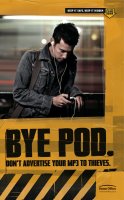Flashes of Insight from the 2012 E.G. Conference
 MIT Director Michael Hawley curates the premiere gathering of and for innovators in media, technology, entertainment and education that is best described as a three-day opera of ideas.  E.G. took place this past week in Monterey, California bringing forward our most creative enterprises, by engaging a gifted mix of people — the most industrious and iconoclastic talents of our time. Not just another conference of ideas, or shakers and movers — this is a meeting and a community of makers.  And doers.
MIT Director Michael Hawley curates the premiere gathering of and for innovators in media, technology, entertainment and education that is best described as a three-day opera of ideas.  E.G. took place this past week in Monterey, California bringing forward our most creative enterprises, by engaging a gifted mix of people — the most industrious and iconoclastic talents of our time. Not just another conference of ideas, or shakers and movers — this is a meeting and a community of makers.  And doers.
This year’s conference, as always, was richly woven from many themes, but one of the strongest threads is in the hands of innovators: people who are reinventing tomorrow.  Tomorrow is probably the strongest brand ever and one that many of us grew up with. It is as important now, as it was then, for us to have both a bright vision of tomorrow and the people who are driven to make it happen.  EG overflows with these exemplars. Technology renegades. Unsung heroes.
Many new insights and themes emerged around rebooting tomorrow from the vast content landscape we explored over the three days in Monterey. A few of those ideas are captured here to illustrate the boundary stretching and profound shifts that are occurring across a wide variety of disciplines, as innovation leads us into tomorrow.
The Intersection of computers and photography
The rapid and exciting shifts underway in photography range from shooting the first full-length feature film with a cell phone to the disruptive change represented by light field photography. Lytro is one of the companies leading this disruptive change as it makes a magical step in the world of photography led by Ren Ng and his team.  The world of images is no longer flatland. The odd cubic camera enables you to focus pictures after the photo is snapped because it has recorded the image’s light data. Not only does it fix the problem of focus, but also it opens up amazing new ways (including 3-D images) to create visual content like discovering detailed elements of the photo that you can shift and change. Lytro has moved light field science out of the lab and into to the consumer market. With these amazing capabilities, pictures become immersive, interactive visual stories that were never before possible – they become living pictures.
The relationship between physical and digital
Despite all of the digital capabilities that surround us, people have a fundamental need for the engagement we get through tactile experiences. Digital seems to slip through our fingers the way life does and perhaps the pendulum is now swinging back to readjust our need for more permanence and physical connection. Brian Selznick, the author of The Invention of Hugo Cabret, which led to the award-winning Scorsese film, Hugo, beautifully illustrated this point. Brian shared his writing process of building the narrative and laying out the illustrations where the turning of a page was like passing through a door, full of surprises and under the control of the reader. For this reason, he explains, “the book will never be made available on e-readers.â€
This second example is on a larger scale, where city planners are architecting tomorrow by looking at ways to make cities more responsive by turning buildings into a canvas of possibilities. In San Francisco, (near the offices of Twitter) they are proposing a local election ballot to allow the digital mapping of art to be projected onto buildings in order to tell artistic stories. This union between the digital and physical worlds may change our sense of place in remarkable ways. Stay tuned to whether a new type of artistic center emerges from this type of interactive space.
Getting big things done
Visions of tomorrow always include getting big things done simply because of the longer timeframes required to address over-sized challenges. Energy and our dependence on oil represents one of these big, daunting challenges as we are all aware that we must leave oil before it leaves us. The future of automotive innovation is expected to deliver efficiency improvements first and then ultimately to switch fuel sources. New concepts will enter our lexicon such as “vehicle fitness†to express auto efficiency and ideas like “feebates†or rebates that will award owners of efficient automobiles, paid for by higher fees from owners of less efficient vehicles. One of the top global thinkers, Amory Lovins presented his views on how we can light a new energy fire.
Daniel Kim the Founder and President of Lit Motors Corporation is looking at ways to change transportation by creating a whole new class of electric vehicles. They have reduced the size of the car by half, creating a fully enclosed motorcycle that gets 130 miles per charge. Instead of the typical 35,000 parts in the average car, their vehicle has only 3,000 parts and is substantially lighter. Their gyroscope technology prevents vehicle tipping and improves safety.
A new visual literacy
We use words to encapsulate concepts, but we shoot, post and share pictures to tell stories and share feelings. Through and assortment of presentations it became clear that there is a new visual literacy developing; we are just at the beginning of this trend with social tools such as Cowbird and Pinterest to connect people emotionally and remind us that the world of tomorrow will be created by everybody.
Over the course of E.G., we heard revelations and insights from mavericks, magicians, musicians, scientists, educators and many others who are operating at the very top of their field. Presenters were all asked to share a revelation, to try something new, to take a risk—even if it might fail. After all, isn’t that what innovation is about?
“Things happen at E.G. that you will remember for the rest of your lifeâ€, promised Michael Hawley in his opening remarks. I found this to be true every year that I have attended this magical and eclectic meeting. Here are a few things I will remember:
- The marvelous short films debuted by Pixar that reminded me again of the ways mobile will accelerate and reinvent new media and entertainment. One of my favorites is the video below:
- The memorable words of photographer Lena Herzog who talked about the soul of photography in references I had never heard before.
 The presentation by cyber illusionist Marco Tempest who created a wondrous approach to storytelling through holographic images that was simply breathtaking.
The presentation by cyber illusionist Marco Tempest who created a wondrous approach to storytelling through holographic images that was simply breathtaking.
- The wisdom and inspiration of Dr. Ellsworth Wareham the heart surgeon who at the age of 95 was still assisting with operations. He decided to stop last year—he thought it was time.
image credit: adrianboeingblogspot & James Duncan Davidson

Don’t miss an article (4,000+) – Subscribe to our RSS feed and join our Innovation Excellence group!
 Donna Sturgess is the President and Co-founder of Buyology Inc and former Global Head of Innovation for GlaxoSmithKline. Her latest book is Eyeballs Out: How To Step Into Another World, Discover New Ideas, and Make Your Business Thrive.
Donna Sturgess is the President and Co-founder of Buyology Inc and former Global Head of Innovation for GlaxoSmithKline. Her latest book is Eyeballs Out: How To Step Into Another World, Discover New Ideas, and Make Your Business Thrive.
NEVER MISS ANOTHER NEWSLETTER!
LATEST BLOGS
iPhone Followup – Innovation in a Box
My initial iPhone article highlighted why the iPhone will not be a success in its first incarnation. Make no mistake though, the introduction of the iPhone will revolutionize the mobile telephony market. Let’s answer some of the criticisms of the most innovative mobile handset in the history of mobile telephony:
Read MoreThe Growing Housing Divide
I was speaking with a friend of mine recently and he brought up an interesting point. He asserted that there was a widening gap in home prices between where people want to live and where people have to live. How else can you explain the housing price fall in most of the country while places like Seattle continue to have rising prices?
Read More


